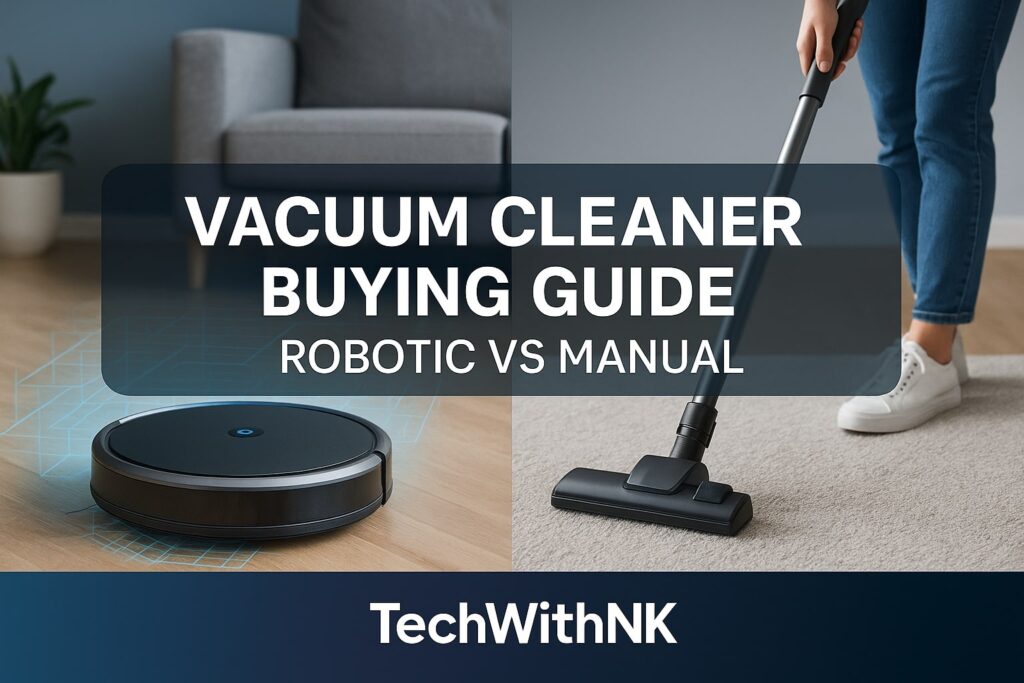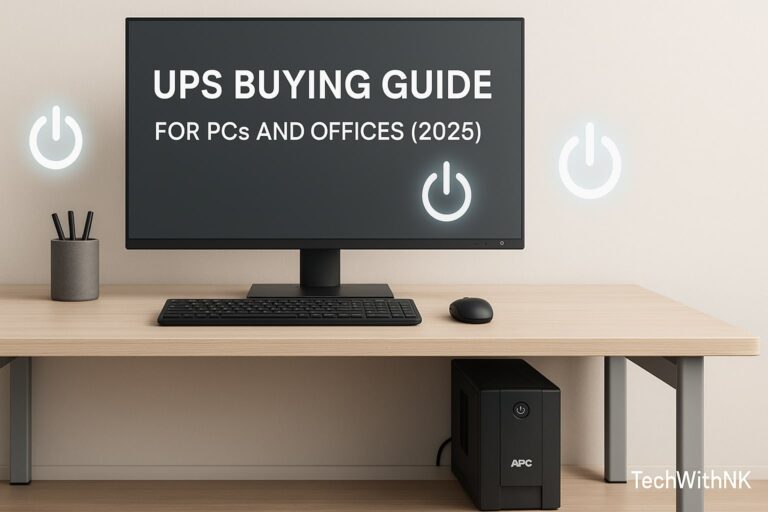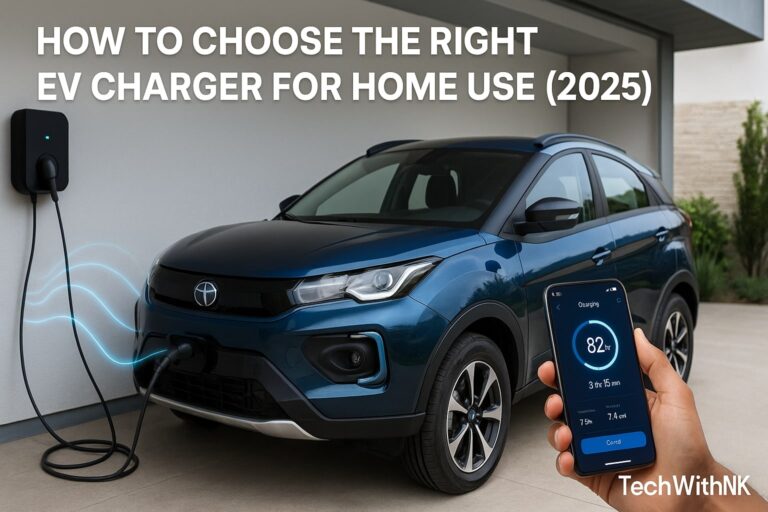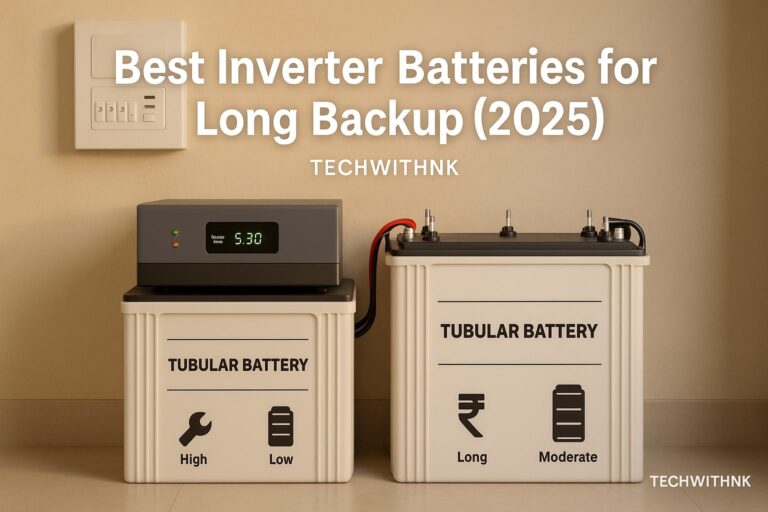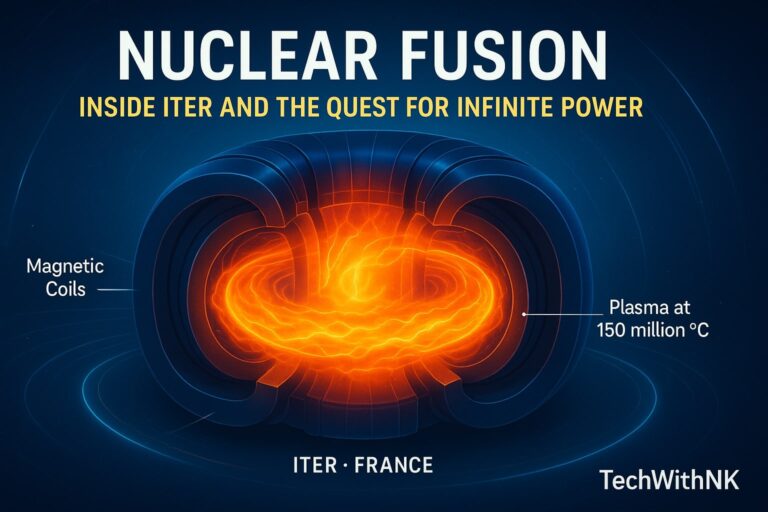🧭 Introduction: The Modern Way to Clean
Cleaning has evolved from a tiring daily chore to an effortless experience. Today’s households rely on advanced vacuum cleaners—whether traditional manual models or intelligent robotic vacuums—to maintain spotless homes with minimal effort.
But with hundreds of models flooding the market—corded, cordless, wet & dry, bagged, bagless, handheld, and robotic—it’s easy to get confused.
This TechWithNK Vacuum Cleaner Buying Guide will help you understand:
How vacuum cleaners work
Differences between robotic & manual types
Key features to look for
Maintenance tips
FAQs before buying
Whether you’re equipping a small apartment or a large bungalow, this guide will help you pick the right cleaning partner.
⚙️ How Does a Vacuum Cleaner Work?
A vacuum cleaner operates on a simple yet powerful principle — suction and filtration.
1. Suction Motor:
Creates a low-pressure zone inside the cleaner. Air from the surroundings (along with dust) rushes in to equalize pressure.
2. Intake Port / Nozzle:
The entry point that collects dust and debris from the surface.
3. Filtration System:
Filters like HEPA or micro-filters trap fine dust, allergens, and pet dander before releasing clean air back into the room.
4. Dust Collector (Bag / Bin):
Holds the collected dirt until emptied or replaced.
5. Exhaust Outlet:
Releases filtered air back into the environment.
🧩 Types of Vacuum Cleaners
Before we compare Robotic vs Manual, let’s explore the major types:
1. 🧺 Upright Vacuum Cleaners
Common in Western countries. The motor, dustbin, and brush are all in one vertical unit—ideal for carpets and large rooms.
Pros:
Powerful suction
Great for deep carpet cleaning
Easy to store upright
Cons:
Heavy and less flexible
Not ideal for under-furniture areas
2. 🧳 Canister Vacuum Cleaners
Feature a separate motor canister connected by a hose—more flexible and suitable for multi-surface cleaning.
Pros:
Better reach under furniture
Quieter operation
Suitable for both carpets & floors
Cons:
Bulky to drag around
3. 🪶 Handheld Vacuum Cleaners
Small, portable units ideal for car interiors, sofas, or small messes.
Pros:
Lightweight and cordless
Quick spot cleaning
Cons:
Small dust capacity
Limited power
4. 🧴 Stick Vacuum Cleaners
Slim, cordless designs for everyday dusting—especially suited to modern apartments.
Pros:
Lightweight
Cordless convenience
Easy wall storage
Cons:
Shorter runtime (battery)
Not ideal for deep cleaning
5. 💧 Wet & Dry Vacuum Cleaners
Designed for both dry dust and wet spills. Perfect for kitchens or garages.
Pros:
Handles liquids & solids
Multipurpose use
Cons:
Heavier & noisier
6. 🤖 Robotic Vacuum Cleaners
Smart, automated devices that clean floors independently using sensors, cameras, and mapping.
Pros:
Fully automatic
Scheduled cleaning
Compact & silent operation
Cons:
Expensive
Can’t clean stairs or corners perfectly
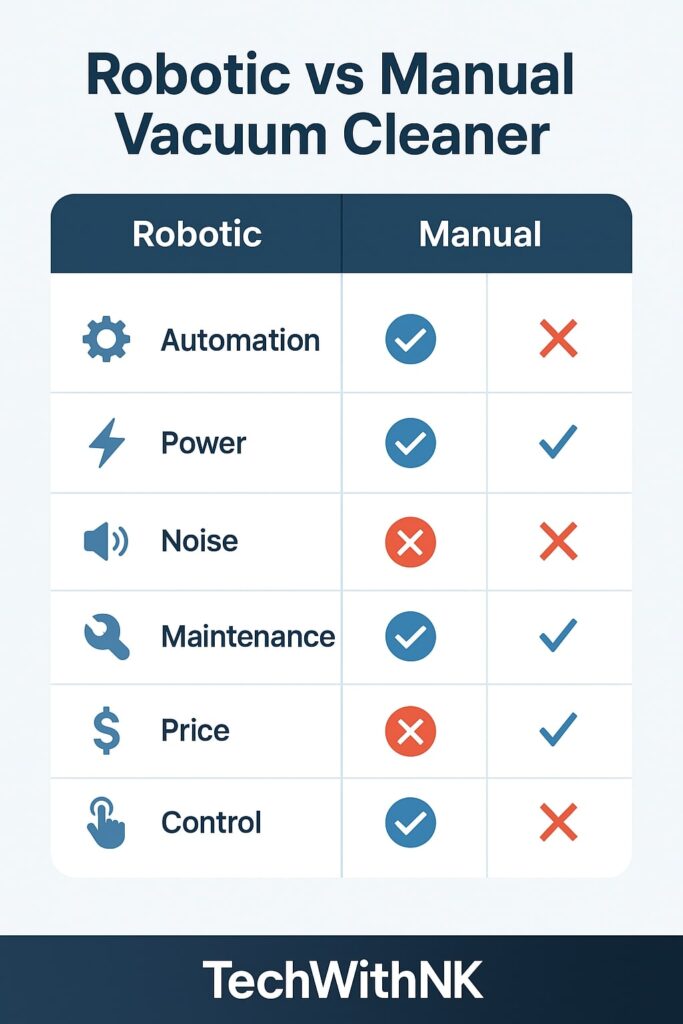
⚖️ Robotic vs Manual Vacuum Cleaner Comparison
| Feature | Robotic Vacuum Cleaner | Manual Vacuum Cleaner |
|---|---|---|
| Operation | Fully automatic; uses sensors & mapping | Manually controlled by user |
| Power Source | Rechargeable battery (cordless) | Corded or battery-operated |
| Control | App / voice / schedule | Manual buttons or switches |
| Suction Power | Moderate (1200 – 2500 Pa) | High (> 200 AW) |
| Cleaning Area | Limited (flat surfaces) | Versatile (floors, sofas, curtains) |
| Maintenance | Regular filter & brush cleaning | Empty dust bag or wash bin |
| Noise Level | 50 – 65 dB (quiet) | 70 – 85 dB |
| Price Range (India 2025) | ₹12,000 – ₹80,000+ | ₹2,000 – ₹25,000 |
| Best For | Busy professionals, tech lovers | Families, deep cleaning needs |
🤖 Robotic Vacuum Cleaner – In-Depth
1. Working Principle
Robotic vacuums use a combination of infrared sensors, gyroscopes, and cameras to map your home and navigate around obstacles.
They create a virtual floor plan using SLAM (Simultaneous Localization & Mapping) and clean efficiently following a grid pattern.
2. Features to Look For
Smart Mapping (LiDAR or Visual SLAM)
App Control / Voice Assistant Support (Alexa, Google Home)
Auto Docking & Charging
Wet Mopping Combo
HEPA Filter
Obstacle Detection & Fall Protection
3. Pros
✅ Saves time
✅ Perfect for daily maintenance
✅ Ideal for dust-sensitive users
✅ Scheduled cleaning & app monitoring
4. Cons
❌ Limited suction power for carpets
❌ Small dustbins require frequent emptying
❌ Higher cost
❌ Can miss edges or corners
🧹 Manual Vacuum Cleaner – In-Depth
1. Working Principle
Manual vacuums rely on human control—you guide the nozzle or brush across surfaces.
2. Features to Look For
Motor Power (Wattage) – typically 600 W to 2000 W
HEPA or Multi-stage Filtration
Dust Container Capacity
Cord Length / Battery Backup
Attachments – crevice tool, sofa brush, floor nozzle
3. Pros
✅ Deep cleaning for carpets & corners
✅ Wide range of affordable models
✅ High suction power
✅ Easy repair & maintenance
4. Cons
❌ Requires manual effort
❌ Bulky in storage
❌ Louder operation
🧠 Smart Features in Modern Robotic Vacuums
AI Path Optimization:
Learns your cleaning pattern and optimizes routes.Voice Integration:
Works with Alexa / Google Assistant.No-Go Zones:
Set boundaries in the app.Auto Recharge & Resume:
Returns to the dock when low on battery and resumes cleaning automatically.Mopping Functionality:
Combines vacuum + mop for dual cleaning.
🔋 Power, Suction & Battery Life Explained
| Parameter | Robotic | Manual |
|---|---|---|
| Suction Power | 1200 – 2500 Pa | 150 – 300 AW |
| Power Rating | 40 – 80 W | 600 – 2000 W |
| Battery Backup | 90 – 180 min | N/A (plugged in) |
| Charging Time | 3 – 5 hours | N/A |
| Cleaning Coverage | 120 – 150 m² | Unlimited |
amet, consectetur adipiscing elit. Ut elit tellus, luctus nec ullamcorper mattis, pulvinar dapibus leo.
🧺 Choosing the Right Vacuum Cleaner for Your Home
🏠 1. Home Size & Floor Type
Small Apartments (≤ 1000 sq ft): Stick or robotic vacuum.
Large Homes (1000 + sq ft): Canister or upright.
Hard Floors / Tiles: Robotic + mopping combo.
Carpets / Rugs: Manual vacuum with high suction.
🐶 2. Pets & Allergies
Look for HEPA filtration to trap dander & pollen.
Pet-specific brushes avoid hair tangling.
🔋 3. Power & Battery
For manual models: ≥ 1000 W suction motor.
For robotic models: ≥ 2500 Pa suction + 150 min battery.
📱 4. Smart Features (If Robotic)
App control
Mapping & navigation
Scheduling
Voice assistant support
🧼 5. Dust Capacity
Minimum 0.5 L (for robotic)
Minimum 1.5 L (for manual)
💸 6. Budget & Brand
Popular Indian brands (2025): Eureka Forbes, Dyson, Xiaomi, iRobot, Kent, Philips, Eufy, AGARO, Tineco.
🧰 Maintenance & Care Tips
Clean filters weekly.
Empty dustbin after every 2–3 uses.
Replace HEPA filters every 6 months.
Avoid water exposure for dry-only vacuums.
For robotic models, wipe sensors & charging pins.
🧼 Top Robotic Vacuums in India (2025)
| Model | Type | Suction Power | Battery | Price (₹) |
|---|---|---|---|---|
| Xiaomi Mi Robot Vacuum Mop 2 Pro | Vacuum + Mop | 3000 Pa | 120 min | 26,999 |
| iRobot Roomba j7 Plus | Vacuum Only | 2500 Pa | 150 min | 69,999 |
| Eufy RoboVac X8 Hybrid | Vacuum + Mop | 2000 Pa | 180 min | 39,999 |
| ILIFE V80 Max | Vacuum + Mop | 2000 Pa | 100 min | 18,999 |
🧹 Top Manual Vacuums in India (2025)
| Model | Type | Power | Capacity | Price (₹) |
|---|---|---|---|---|
| Dyson V12 Detect Slim | Stick Cordless | 150 AW | 0.35 L | 58,900 |
| Philips PowerPro FC9352/01 | Bagless Canister | 1900 W | 1.5 L | 9,499 |
| Eureka Forbes Quick Clean DX | Bagged | 1200 W | 1 L | 6,999 |
| AGARO Regal Plus | Handheld | 800 W | 0.8 L | 2,899 |
🧾 Conclusion: Which One Should You Buy?
If you’re a tech-savvy professional seeking effortless daily cleaning, a robotic vacuum is a smart investment.
If you prefer power, precision, and budget control, a manual vacuum offers better value.
TechWithNK Recommends:
➡ Use a manual vacuum for weekly deep cleaning + a robotic vacuum for daily maintenance.
This hybrid approach ensures maximum cleanliness and efficiency for modern Indian homes.
Which is better: robotic or manual?
If you prefer automation and convenience, go for a robotic vacuum. For deep cleaning, manual is better.
Can robotic vacuums replace manual ones?
Not completely. They’re ideal for daily surface cleaning but can’t handle heavy dust or stains.
What’s a good suction power for a home vacuum?
Manual → ≥ 1000 W (150 AW)
Robotic → ≥ 2000 Pa
